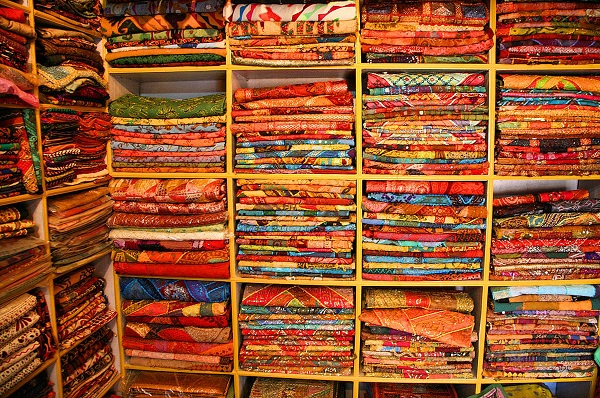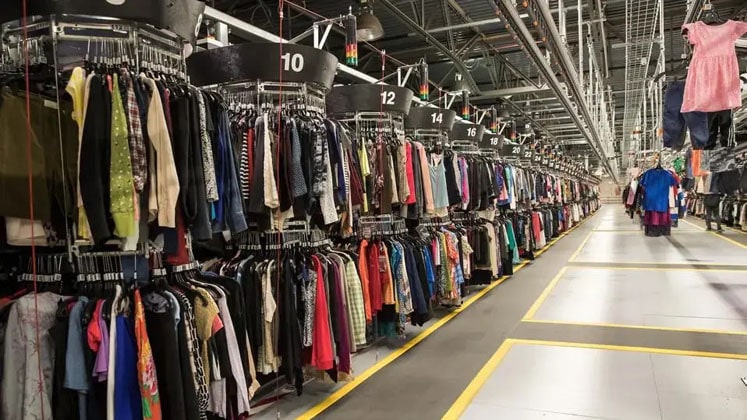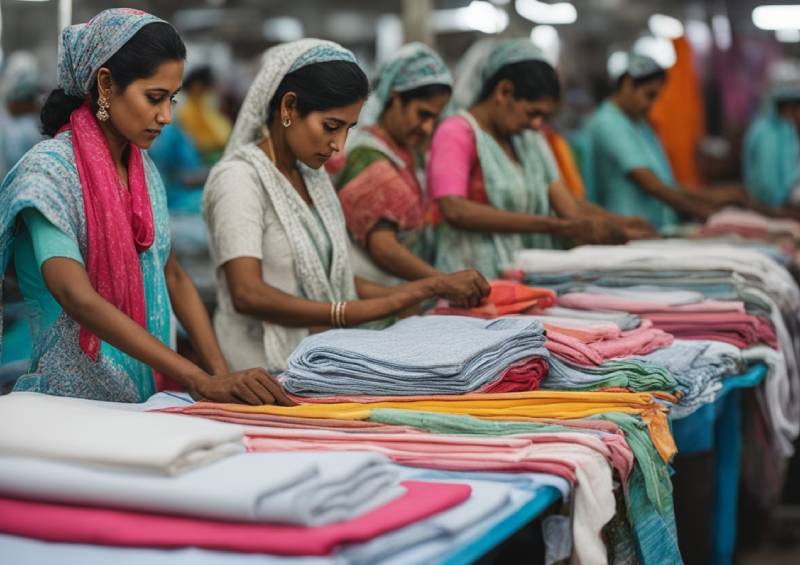
India's textile industry faces tough times as international consumers cut spending on non-essentials and import orders of both textiles and garments contract worldwide. This leaves the sector vulnerable. It can no longer be denied that the $200 billion textile and apparel industry is facing a crisis as consumers in the United States, Europe and other big markets have cut spending on clothing following a surge in inflation after the war in Ukraine.
While the overall Indian economy is relatively strong and is outperforming major economies, the textile sector is a notable exception and orders suggest the downturn will continue well into 2023, raising the risk of layoffs in an industry that employs over 45 million people, reveals various reports. Expert say, exports, which constitute about 22 per cent of the industry, fell over consecutive months, declining over 15 per cent year-on-year in November 2022 to $3.1 billion. A McKinsey report too has confounded the fear that export of textiles and garments did not have a good outlook in 2023.
This manifests in the production of textiles as measured by the Index of Industrial Production (IIP) for textile has seen a consistent decline since March 2022. On a cumulative basis from April to October, 2022, the index value was lower than the corresponding period in 2021.
Cost-attractive imports surge
As per CRISIL SME Tracker, in FY24, cotton yarn prices are projected to fall almost 15 per cent due to a high base and subdued export demand and this will affect price realization. The textiles sector could see a moderation in revenue growth in 2023-24 (FY24) as export demand, which usually accounts for a fourth of the total market, is expected to be limited due to a slowdown in US and Europe. However, domestic demand is expected to grow at a steady pace.
For small and medium enterprises (SMEs), which make up around 75 per cent of the textile value chain and are estimated to have seen robust revenue and profit growth in FY22 on the back of a post-pandemic surge in exports will be adversely affected.
Meanwhile, while production has taken a hit, imports of textiles have increased. In the period from April to November, 2022, imports of textiles were valued at Rs 433 billion according to findings by The Print. In the same period of last year, imports of textiles were valued at Rs 313 billion. In recent months, particularly after the onset of the Russia-Ukraine war, imports have risen consistently.
The steady rise in textile imports is not just a recent phenomenon. It owes its origin to policies of the past few years. India allowed duty-free import of readymade garments from Bangladesh under the South Asian Free Trade Agreement (SAFTA) in 2006. This has resulted in an increase in imports of apparels made with Chinese fabrics and yarns. Bangladesh imports Chinese fabrics, converts them into garments using its cheap labour and exports the garments so made to India, without paying any import duties. Thus, the duty-free market access given to Bangladesh is facilitating indirect entry of Chinese textiles into India.
Can domestic consumption rescue the sector
According to CRISIL SME Tracker, FY 2024 will show a boost in textile sector led by domestic consumption. With Indian consumers upping spends on readymade garments, festive wear and occasion wear, this is bound to affect the textile sector’s plunging production in a positive manner. This is why domestic production hubs like Kolkata, Kanchipuram and Ludhiana are likely to outperform the export-centric clusters. The proliferation of local labels for mass and high fashion, thanks to e-commerce, has also increased, adding to greater demand for domestic textiles.
If this trend continues upwards, the domestic textile sector will have to pull through 2023 for good times next year.












